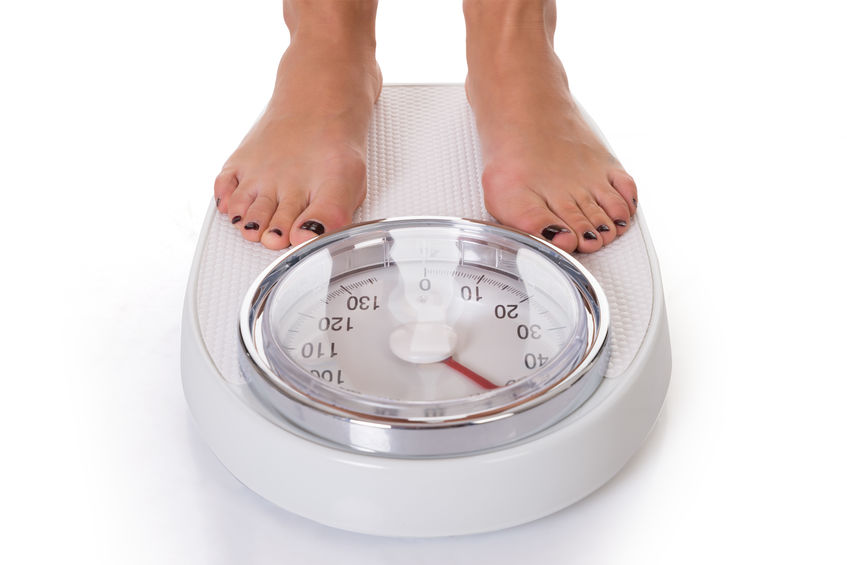When your once-lovely waist has suddenly become a spare tire, it’s more than disconcerting, it’s downright upsetting! Rest assured, it is not just you. There are real hormonal reasons behind this phenomena. Here we’ll discuss what menopause belly is, where it comes from and the best way to lose menopause belly fat. From treatment options to changing your diet and exercise, we’ll show you how you can take back control of your belly weight.
What Is Menopause Belly?
It’s well documented that as women age, we gain weight. In fact the average weight gain is about 41/2 pounds during perimenopause. According to a recent review from the Mayo Clinic Proceedings journal, weight gain steadily increases when women are in their 50s and 60s. The average weight gain is about 11/2 pounds each year.

Weight gain is attributed to a natural slow down of metabolism as your body begins to break down muscle, starting from when you’re in your 30s. You can expect to lose about a half a pound of muscle per year and about a full pound when you are in your 50s. The more muscle you have, the higher your metabolic rate, which is the speed of chemical reactions in your body to burn fuel for energy.
Additionally, as people age, they are less likely to be physically active which also contributes to weight gain.
However, a big reason for gaining weight is the drop of hormones during perimenopause. Perimenopause is the time period before menopause begins which can last from 2-10 years. This is the beginning of menopausal symptoms as well as the decline of the hormones estrogen and progesterone levels. Menopause officially begins when there are 12 consecutive months without a period.
There have been studies showing the tendency to eat more and be less physically active with lower estrogen levels. Decreased estrogen may also slow down metabolism. The most alarming part is that all this new weight accumulates around your tummy.
This happens because once your estrogen levels drop, the abdominal fat cells are the sole place in the body where estrogen is produced. In order to get more estrogen, your body stores more and more fat cells in that area. Additionally, when progesterone levels drops, the level of cortisol is increased. Cortisol is known as the stress hormone which causes your body to hold onto menopause belly fat.
Fat which accumulates around the abdominal section is called visceral fat which is known to be implicated in other conditions such as:
- Diabetes
- Stroke
- Heart disease
- Some cancers
How To Lose Menopause Belly Fat
Now that we know where it comes from, let’s get rid of it! The best way to lose menopause belly weight is to target both the underlying deficiencies in menopausal women as well as the symptoms themselves. Which is to say, diet and exercise are still incredibly important to your weight loss journey, but they should be specifically tailored to your changing body.
Lose Weight For Your Overall Health
Losing weight is important not just for vanity. Research is developing to find a connection between being overweight and hot flashes.
And even though exercise won’t treat hot flashes or insomnia, it is known that regularly exercising helps you sleep, eat and feel better.
Best Diet For Menopause Belly Fat

You don’t need as many calories as you did in your 30s and 40s. Aim to eat about 200 calories less.
- Say no to fruit and added sugar. Stick with veggies.
- Follow a low-glycemic diet.
- Exercise often.
- Low-carb diet.
Avoid:
- High-fructose corn syrup
- High glycemic index carbs
- Saturated fats
Exercises For Menopause Belly Fat
You may be in excellent shape, but as we mentioned above, you may not be doing the best exercise for menopause belly fat. For instance, swimming will build up endurance, but are not weight bearing. It’s recommended to do moderate aerobic activity for 150 minutes per week or more intensive aerobic activity for 75 minutes per week. As well as to do strength training exercises twice per week. This are all the minimum recommendations.
You don’t need to give up your favorite exercises, but consider adding the following to your exercise regimen:
- Aerobic activity – Going for an hour long jog is not what you’re going for. You want to increase your heart rate and then move on to a strength resistance exercise like weight lifting. People make the mistake of only doing aerobic activity such as walking, jogging or swimming and then get frustrated when they don’t see the results they are looking for.
- Strength resistance – The number one complaint of women when it comes to strength training or working with weights is that they don’t want to end up looking like Arnold Schwarzenegger. Luckily, working with weight 2 times per week won’t even get you close to that! Strength training is crucial for building up muscle and preventing osteoporosis. As you lose muscle mass, muscles become more prone to breakage which would lead to even further inactivity, something you want to avoid if you’re trying to lose weight. If you don’t have weights, get creative! Using cans of tomato sauce or bottles of wine will get the job done. If you’re on the go or don’t have access to any equipment, you can use a park bench to do triceps dips or pull up a patch of grass to plank. Working on your muscles will make you burn calories more efficiently making you look tighter, so even if you don’t see a huge difference on the scale, it will definitely be noticeable when you can get into your favorite pair of jeans. Do a set of 12 repetitions then take a break and do it again. At first you may only be able to do one set.
- Belly exercises – You may be doing crunches every night in the hopes that your belly will go away and while crunches are great, they only target the same muscles. There are many muscles in your abdomen, so doing a variety of core exercises will help get them all.
- Stretching – Keeping yourself flexible is also important as you hit menopause. After exercising, take 5-10 minutes to really stretch your muscles. Additional benefits are that your muscles will stay loose, not stiff, so that you’ll be exercise again the next day.
- Stability and balance. Balance exercises improve stability and can help prevent falls. Try simple exercises, such as standing on one leg while brushing your teeth. Activities such as tai chi also can be helpful.
Menoprin™ By Approved Science®
Sick and tired of suffering from uncomfortable menopause symptoms? Find out how menopause supplements work and what you should look for in a quality product. Read Menoprin™ reviews from real customers to see what it can do for you!

